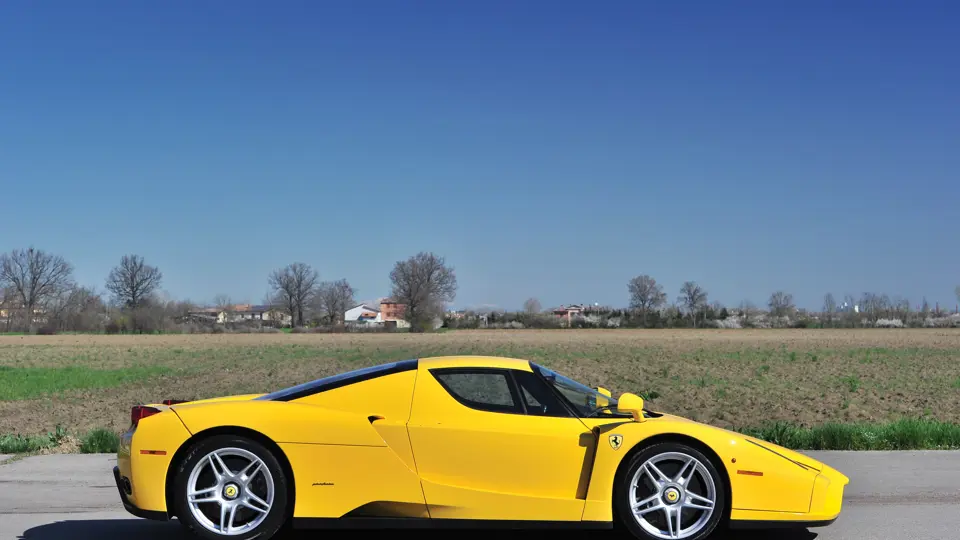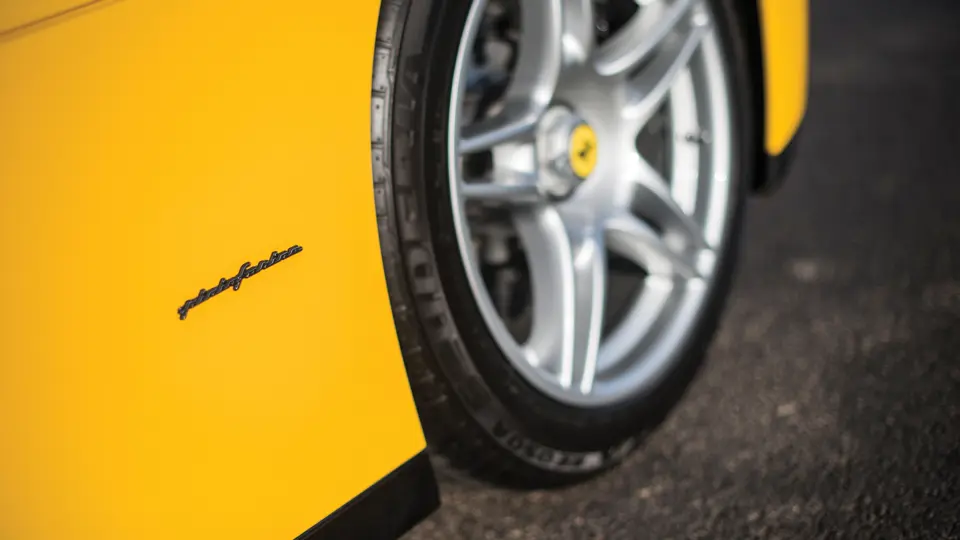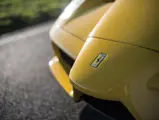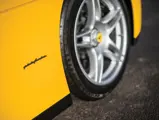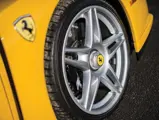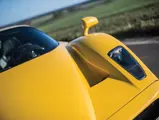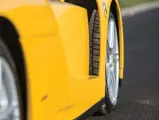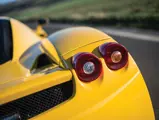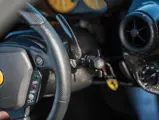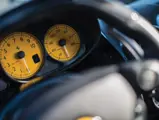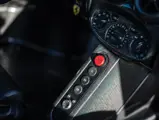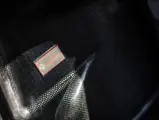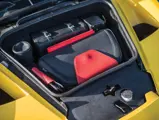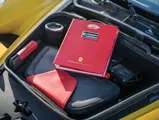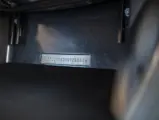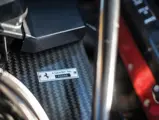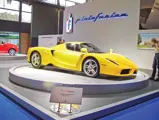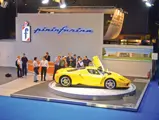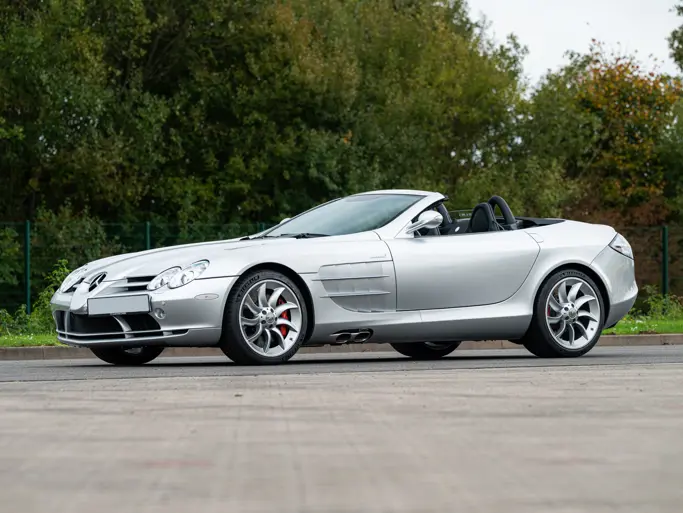
2002 Ferrari Enzo
{{lr.item.text}}
€1,260,000 EUR | Sold
{{bidding.lot.reserveStatusFormatted}}
- Pininfarina’s 2002 Paris Motor Show car
- Rare and desirable original colour combination
- Offered with its original set of books, tools, and luggage
- Ferrari Classiche certified
- Esposta allo stand Pininfarina al Salone dell’auto di Parigi del 2002
- Rara, desiderabile ed originale combinazione di colore
- Offerta completa dei libretti uso e manutenzione, set attrezzi e valigie originali
- Certificata Ferrari Classiche
660 bhp, 5,998 cc DOHC 65-degree V-12 engine with Bosch Motronic engine management and electronic fuel injection, six-speed electro-hydraulic computer-controlled sequential F1 gearbox, limited slip differential and traction control, front and rear pushrod-actuated double wishbones with horizontal external reservoir coil-spring damper units, and four-wheel ventilated carbon-ceramic disc brakes. Wheelbase: 2,649 mm
660 cv, 5.998 cc, motore V-12 a 65° con doppio albero a camme in testa, con sistema di gestione del motore ed iniezione di carburante Bosch Motronic, cambio sequenziale F1 con controllo computerizzato ad azionamento elettro-idraulico, differenziale autobloccante e controllo della trazione, sospensioni anteriori e posteriori a doppio quadrilatero articolato deformabile con ammortizzatori telescopici orizzontali con serbatoio esterno, quattro freni a disco auto ventilati carbo-ceramici. Passo: 2.649 mm
As Ferrari entered the new millennium, its Formula One team was embarking on another golden era. The team would go on to win six constructors’ titles between 1999 and 2004, and it would then go on to win a further two world championships in 2007 and 2008. After several years in the doldrums, Ferrari was back on top at the highest level of racing.
In the words of Luca di Montezemolo: “The third millennium has begun with Ferrari enjoying a period of great competitiveness on the world’s racing circuits; so authentic a laboratory for advanced research as it has in recent years. To bring together our racing success and the fundamental role of races, I decided that this car, which represents the best of which our technology is capable, should be dedicated to the founder of the company, who always thought racing should lay the foundations for our road car designs. And so this model, of which we are very proud, will be known as the Enzo Ferrari”.
These words were spoken at the Paris Auto Show in September 2002, during the unveiling of the Enzo Ferrari, the successor to the F50. The world was waiting with baited breath, as the F50’s successor had very big shoes to fill.
The Enzo Ferrari featured the pinnacle of technology, engineering, and design, combining lessons from Ferrari’s Formula One success with a development team that strived for the best. In fact, Ferrari’s engineers spent countless hours carefully sculpting the car’s design in order to hone the perfect balance of downforce and top speed. The interior is awash in carbon fibre, but there are no superfluous elements in the cabin to distract the driver from the task at hand. Aside from the leather bucket seats, the only nod to luxury is a climate-control system. Not even a radio was available, as it would add unnecessary weight and mask the glorious sound of the 12-cylinder engine sitting just inches behind the cockpit.
At the Enzo’s heart is its 660-horsepower, Tipo F140B, naturally aspirated V-12 engine. This is an all-new unit that has been developed specifically for use in this car, and when it is coupled with a six-speed, sequential F1-style gearbox, it is capable of launching the Enzo from 0 to 60 mph in just 3.6 seconds, thanks also in part to its lightning-quick 150-millisecond gearshifts. If the pilot is offered a stretch of road long enough, the Enzo can accelerate to an astonishing 218 mph, making it the fastest road car Ferrari had ever produced at the time. As owners would expect of a car of this calibre, the carbon-ceramic brakes are on par with its incredible performance, and the Ferrari can grind to a halt from 80 mph in a scarcely believable 188 feet.
In keeping with Ferrari’s long-held philosophy of building its flagship cars in limited numbers, the decision was made to produce just 349 examples. Ferrari invited only their best and longest-standing customers to purchase the car, as a reward for their loyalty to the Scuderia. As a result, every Enzo was spoken for before production even began. After numerous requests from clients around the world, Ferrari offered Enzos to an additional 50 customers, making for a total run of just 399. That being said, the 400th Enzo was presented to Pope John Paul II as a gift and was later auctioned off for charity on his behalf.
The Enzo presented here, chassis number 129581, was produced in July 2002 and is one of just a handful of Enzos finished in striking Giallo Modena with a Nero leather interior. This car was displayed at the Paris Motor Show on the Pininfarina stand in October 2002, where the Enzo was first publicly unveiled to the world. In September 2003, it was then shown by Ferrari France at Magny-Cours.
The car, along with its optional fitted luggage, was sold through Ch. Pozzi S.A to Mr Tunon Gregorio in Monaco on 17 December 2003. It received its first recorded service at G. Cavallari Monaco Motors on 19 June 2004, and at this time, its odometer displayed 10,772 kilometres. In October 2005, the Enzo participated in the first International Enzo Ferrari Rally Maranello-Modena, where it featured Monaco license plate 1111. The car was serviced again by G. Cavallari at 12,647, 19,973, and 23,538 kilometres. Additional service records note that the Ferrari was then taken to Eberlein Ferrari Kassel in Germany on 24 January 2012. Then, in January 2013, the car was serviced by Ch. Pozzi, from where it was sold new, with 26,339 kilometres showing on its odometer. Most recently, in March of this year, the car received its 30,000-kilometre service at Motor Service S.r.l in Modena.
The Enzo was an instant success when new, and it has become even more desirable to collectors over time. It is undoubtedly the most collectible of the Montezemolo-era Ferraris, and whilst production of the Enzo ended a decade ago, its performance is still considered world-class. The Enzo is a product of a time when Ferrari was operating at its peak both on the road and track, and this example would be the centrepiece of any collection of modern supercars.
Con il passaggio al nuovo millennio Ferrari, grazie alla sua squadra di Formula 1, stava vivendo un altro periodo d’oro. Tra il 1999 ed il 2004, Ferrari avrebbe vinto sei titoli costruttori di F1, ed avrebbe poi vinto ulteriori due campionati nel 2007 e nel 2008. Dopo parecchi anni di sofferenza, Ferrari era finalmente tornata ai livelli consoni di successo ai massimi livelli delle competizioni.
Luca di Montenzemolo ha detto: “Il terzo millennio è iniziato con la Ferrari protagonista di un periodo di enorme competitività sulle piste di tutto il mondo; mai come oggi le corse sono un laboratorio di ricerca avanzata. Per riunire i nostri successi sportivi ed il fondamentale ruolo delle corse, ho deciso che questa vettura, che rappresenta il meglio di cui è capace la nostra tecnologia, debba essere dedicata al fondatore della nostra azienda. Un uomo che ha sempre pensato che nelle corse si debbano poggiare le fondamenta delle nostre vetture stradali. Ed è per questo che questa vettura, di cui andiamo estremamente orgogliosi, sarà conosciuta come Enzo Ferrari”.
Queste parole sono state dette al Salone di Parigi del Settembre del 2002, durante la presentazione della Ferrari Enzo, nata per rimpiazzare la F50. Una vettura che il mondo aspettava con impazienza, visto che l’erede della F50 avrebbe potuto solo essere qualcosa di straordinario.
La Ferrari Enzo rappresentava il meglio della tecnologia, dell’ingegneria e del design, combinando le lezioni imparate grazie all’esperienza ed ai successi in Formula 1, sviluppata da un gruppo di lavoro che, semplicemente, ambiva al meglio. Gli ingegneri Ferrari, ad esempio, hanno speso un numero incalcolabile di ore a modellare ogni singolo dettaglio della carrozzeria per ottenere il miglior risultato in termini di deportanza alle alte velocità. L’abitacolo è quasi completamente realizzato e rivestito con fibra di carbonio, ma al contempo non c’è un solo singolo dettaglio superfluo a distrarre, almeno potenzialmente, il pilota da quello che deve fare: guidare. Fatta salva la pelle che riveste i sedili, il solo altro segno convenzionale di lusso, è l’impianto di climatizzazione. La radio non era disponibile, neppure a richiesta: avrebbe aggiunto peso addizionale del tutto superfluo ed, inoltre, avrebbe potuto coprire il trionfale suono del V-12 posizionato solo alcuni centimetri dietro l’abitacolo.
Il cuore della Enzo è il motore, V-12 aspirato tipo F140B, con i suoi 660 cavalli. Si tratta di un’unità tutta nuova, sviluppata appositamente per essere utilizzata su questa vettura, ed è capace, abbinato al cambio sequenziale a 6 marce, in stile F1, di far raggiungere alla Enzo i 100 km/h in 3,6 secondi, grazie anche al cambio fulmineo, capace di cambiare rapporto in 150 millisecondi. Se al pilota si para davanti un tratto di strada lungo abbastanza, la Enzo può raggiungere uno strepitoso 350 km/h di velocità massima, che la rendono la Ferrari stradale più veloce di sempre. Come è lecito aspettarsi da una vettura di questo tipo, i freni carbo- ceramici sono all’altezza delle prestazioni, e la Enzo può fermarsi da 130 a 0 km/h nell’incredibile spazio di soli 57 metri.
Coerente con la scelta, ormai tradizionale, di Ferrari di produrre la sua vettura simbolo in tiratura limitata, era stata inizialmente presa la decisione di produrre solo 349 esemplari. Ferrari ha invitato solo ed esclusivamente i suoi migliori e più fidelizzati clienti ad un’anteprima della macchina, per permettergli di acquistarla come riconoscimento alla fedeltà mostrata alla Scuderia. Il risultato finale, è stato quello di vendere tutta la produzione, ben prima ancora di cominciarla. Dopo numerosissime richieste da parti di clienti provenienti da tutto il mondo, la Ferrari ha deciso di produrre ulteriori 50 Enzo, portando il totale a 399. E’ stata, in realtà, prodotta anche la vettura numero 400, da donare a Papa Giovanni Paolo II perché potesse essere messa all’asta, a suo nome, e devolvere l’intero ricavato in beneficienza.
La Enzo presentata qui, si tratta del telaio 129581, è stata prodotta nel Luglio 2002 ed una delle pochissime Enzo originariamente verniciate in colore Giallo Modena, con gli interni in pelle Nero. Questa è la vettura utilizzata per l’esposizione sullo stand della Pininfarina in occasione del Salone dell’automobile di Parigi del 2002, dove la Enzo ha fatto il suo debutto ufficiale. Nel Settembre del 2003 è stata poi esposta a Magny-Cours da Ferrari France.
Questa vettura, accompagnata dal suo set opzionale di valige, è stata venduta la prima volta dal concessionario Ch. Pozzi S.A a Mr Tunon Gregorio del Principato di Monaco il 17 Decembre del 2003. Ha ricevuto il primo tagliando, come da trascrizioni sul libretto, presso la G. Cavallari Monaco Motors il 19 Giugno 2004, quando il contachilometri indicava 10.772 chilometri. Nell’Ottobre del 2005 la Enzo partecipa al primo raduno Internazional Enzo Ferrari Rally Maranello-Modena, sfoggiando la targa Monaco 1111. La macchina torna poi da G. Cavallari per altri tagliandi, a 12.647 km, 19.973 km ed a 23.538 km. Le ultime note legate ai tagliandi, evidenziano come la Enzo si stata anche portata alla Eberlein Ferrari di Kassel, in Germania, il 24 Gennaio 2012. Nel Gennaio 2013 la macchina torna alle origini e viene sottoposta a tagliando presso la Ch. Pozzi, dove era stata originariamente venduta, con 26.339 chilometri indicati sul conta chilometri. Più recentemente, Marzo di quest’anno, la Enzo viene sottoposta al tagliando dei 30.000 km presso Motor Service S.r.l di Modena.
La Enzo ha incontrato, sin da subito, un grande successo, e, con il trascorrere del tempo è diventata ancora più un oggetto da collezione. E’, senza ombra di dubbio, la Ferrari più collezionabile del periodo Montezemolo e, sebbene la sua produzione sia terminata circa 10 anni fa, le prestazioni sono, ancora oggi, considerate ai massimi livelli. La Enzo è figlia della tecnologia Ferrari in un momento in cui la fabbrica godeva dei massimi successi sia in pista che su strada e, questo esemplare, potrebbe essere il fulcro di ogni collezione di supercar.
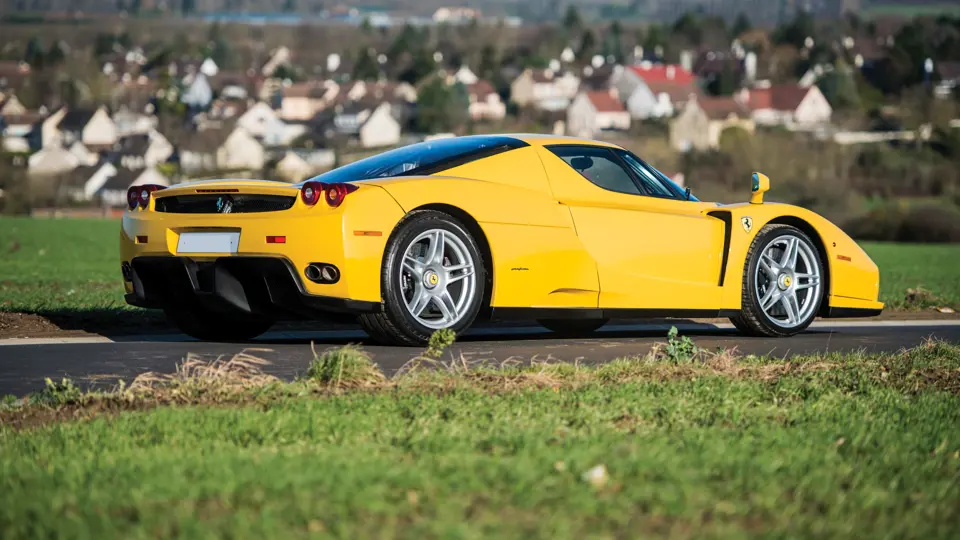

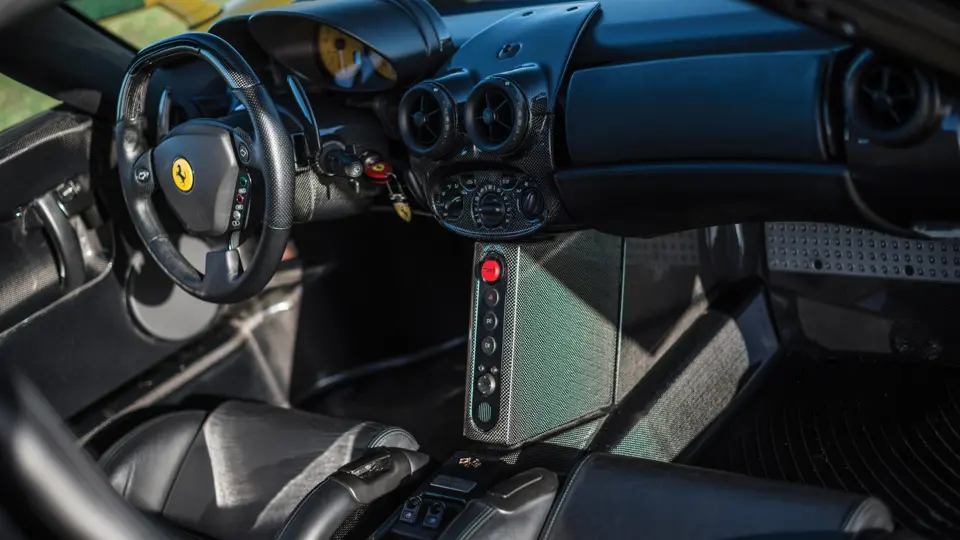

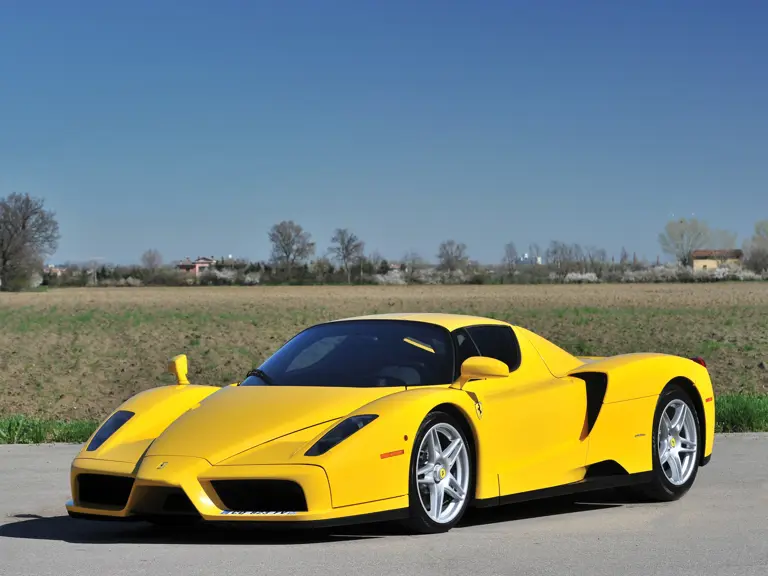
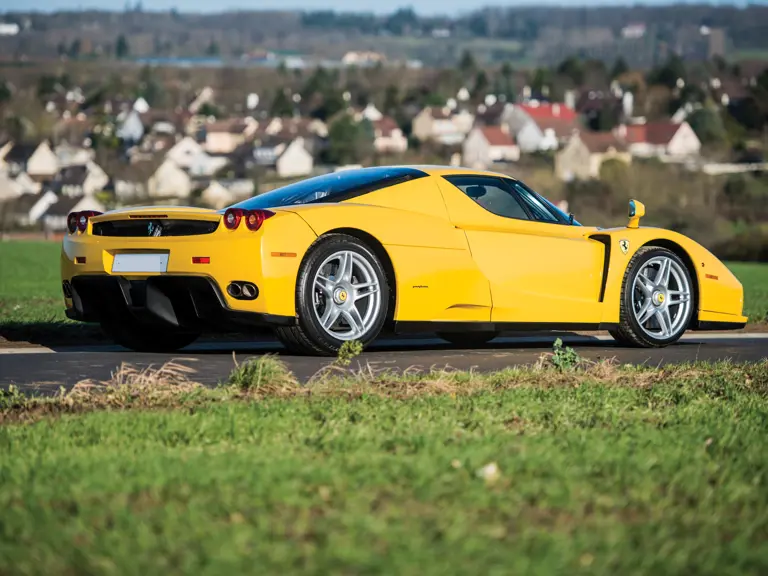
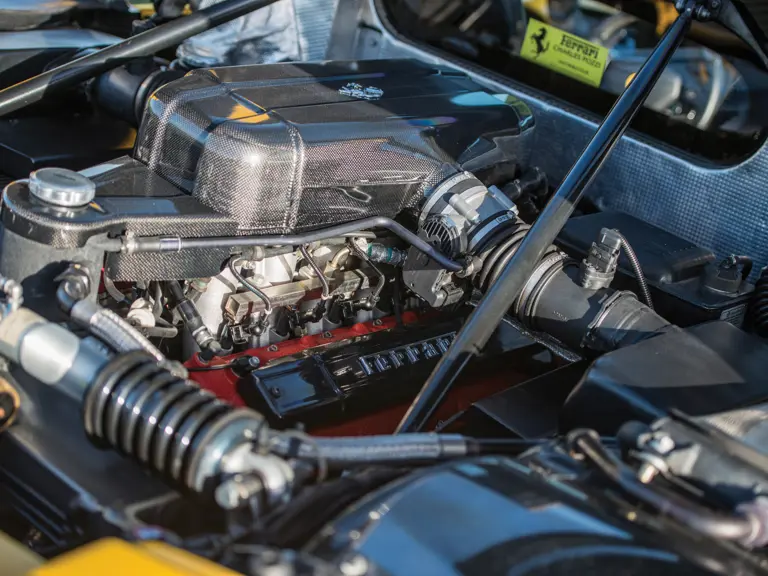
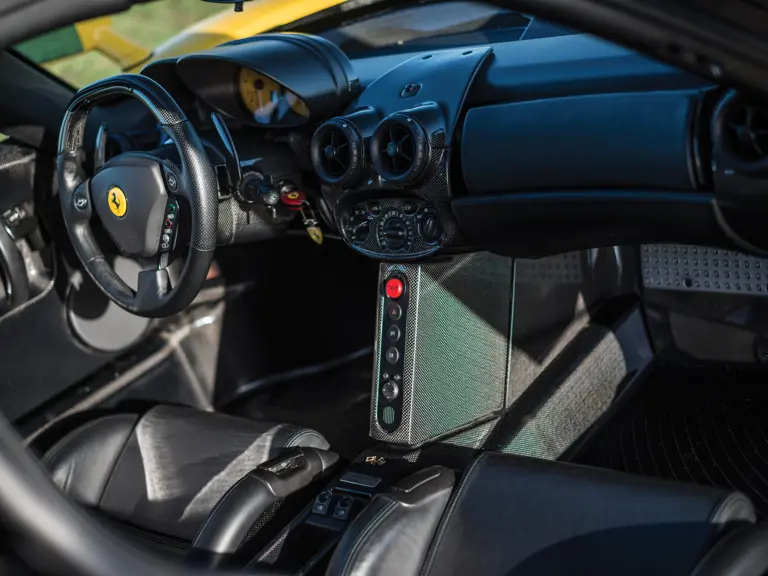
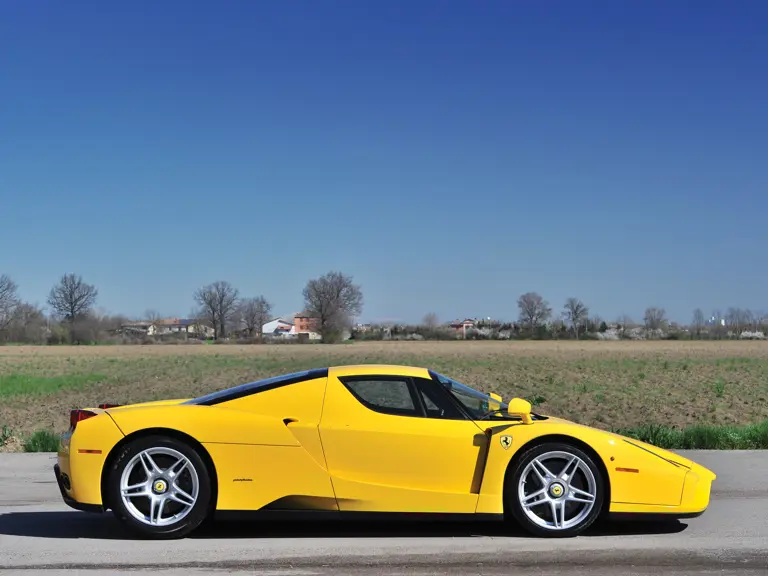
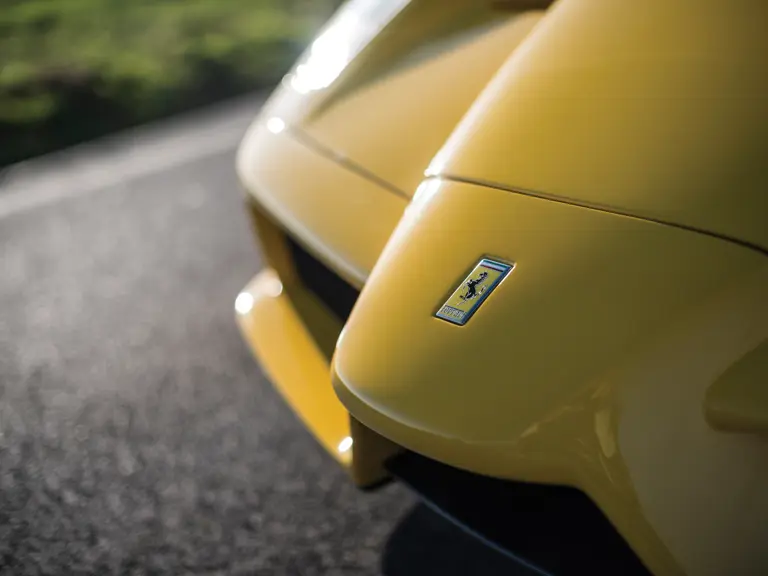
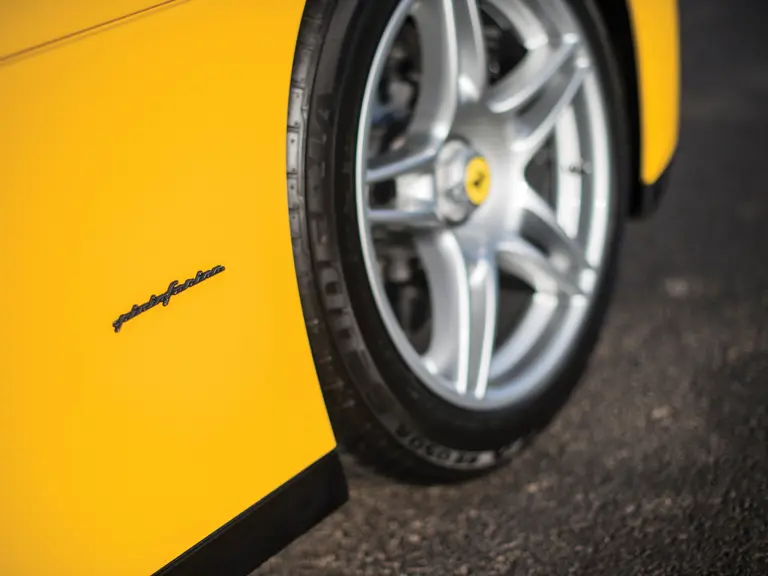
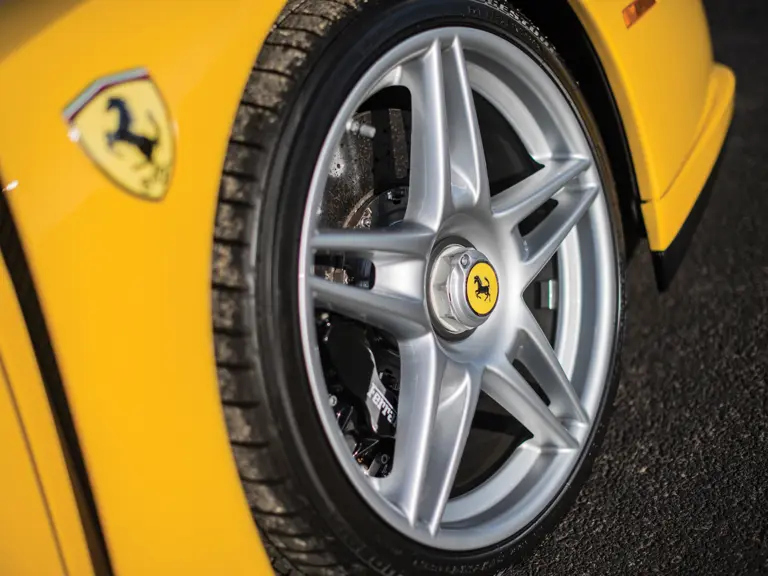


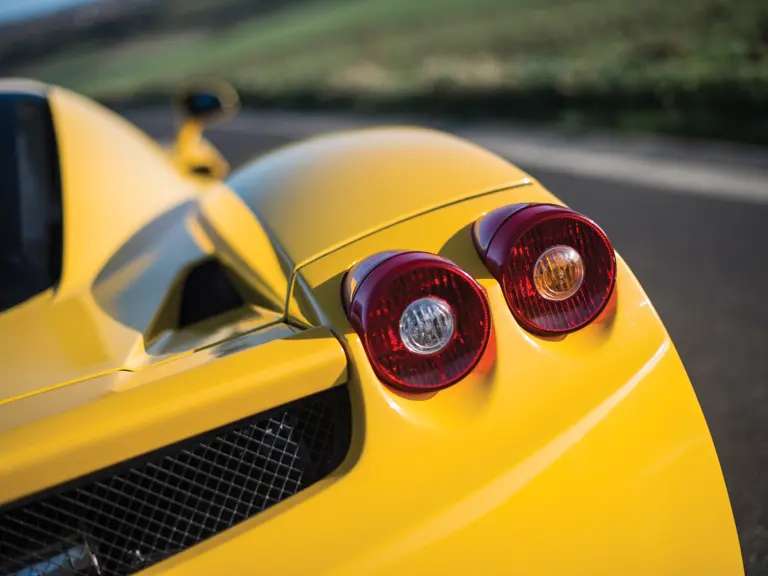

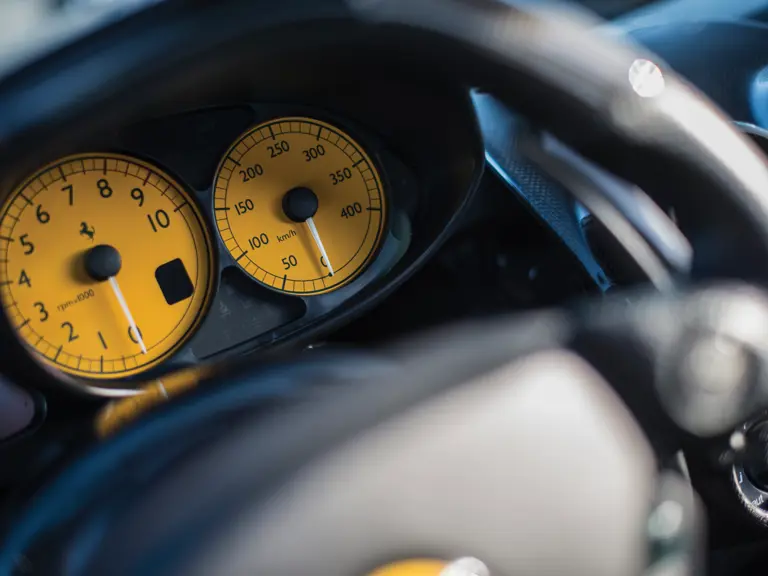
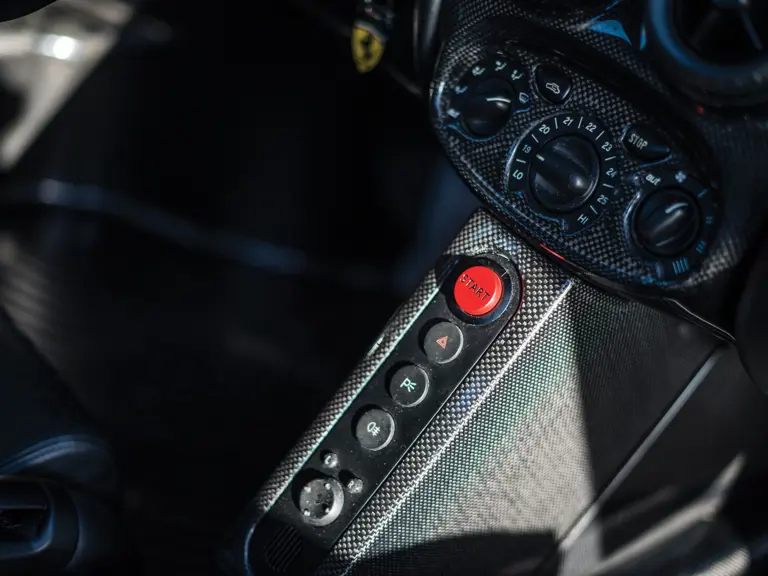
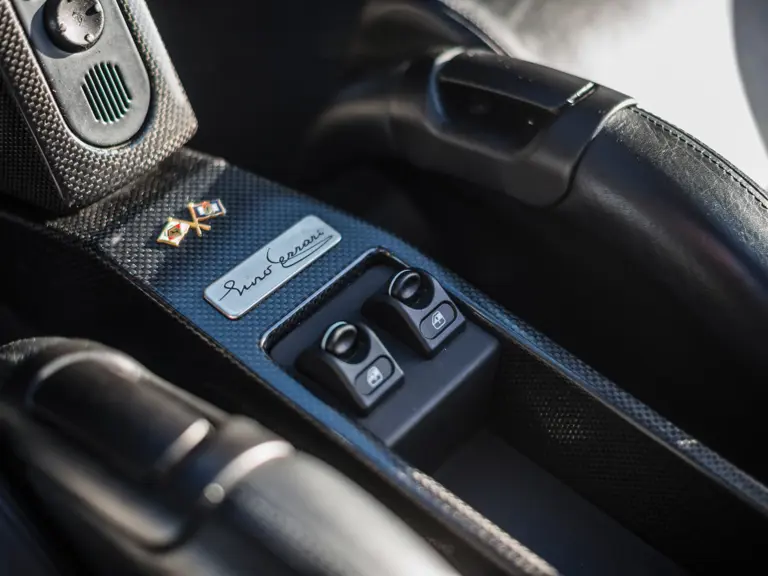


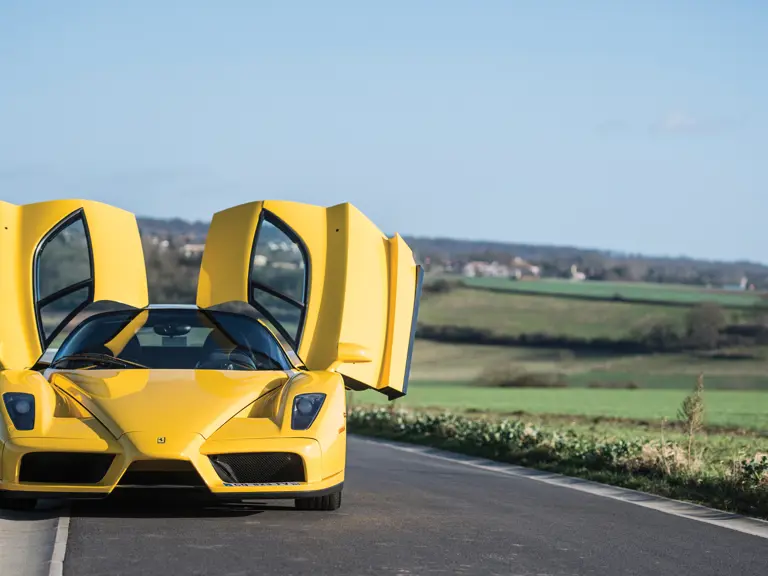
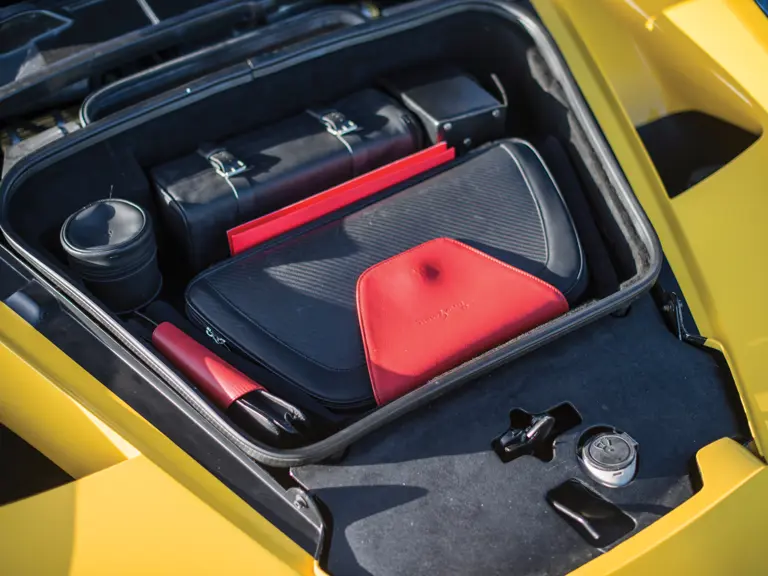
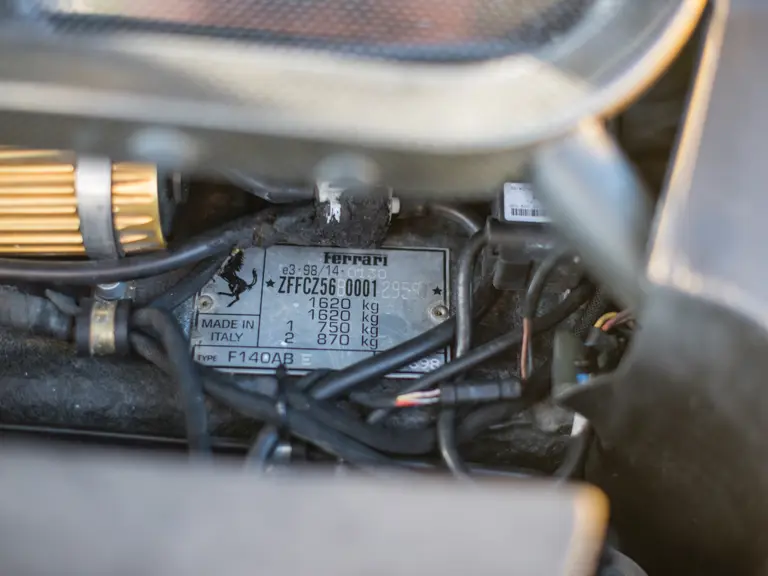
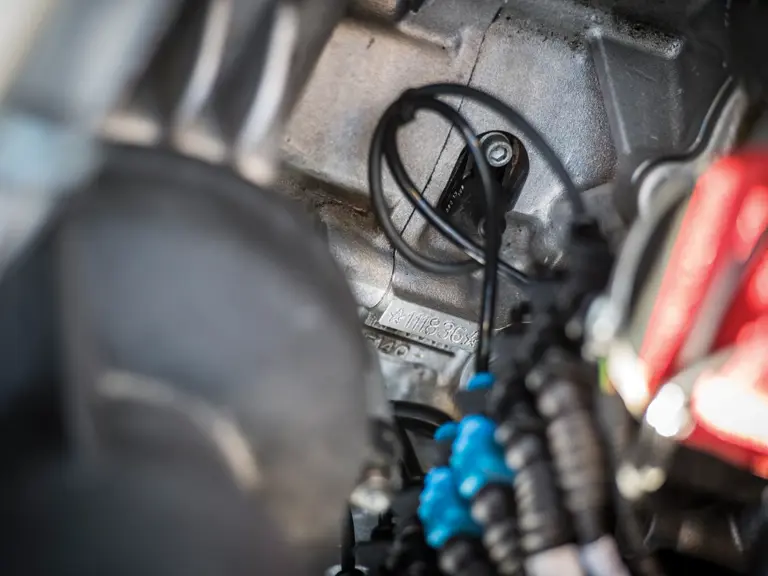
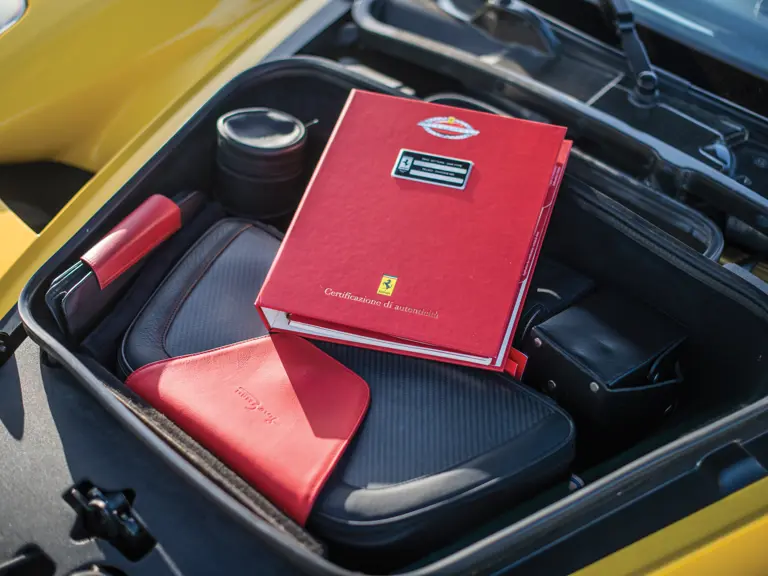
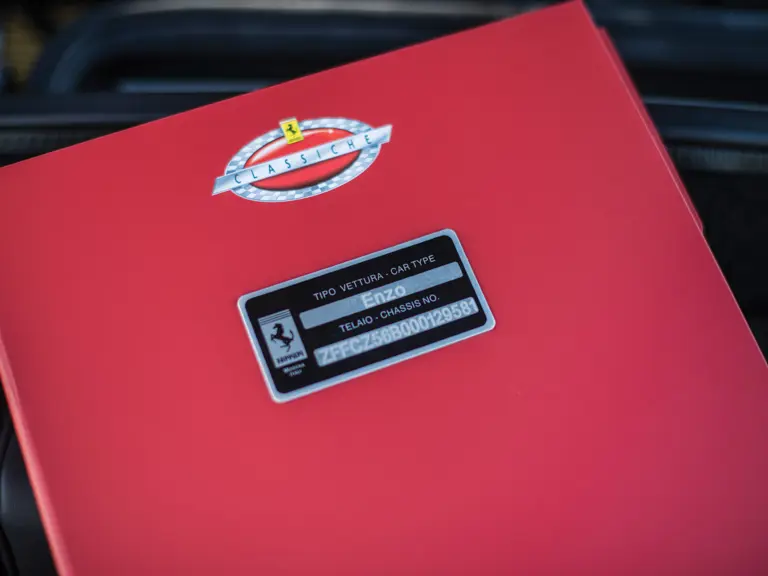
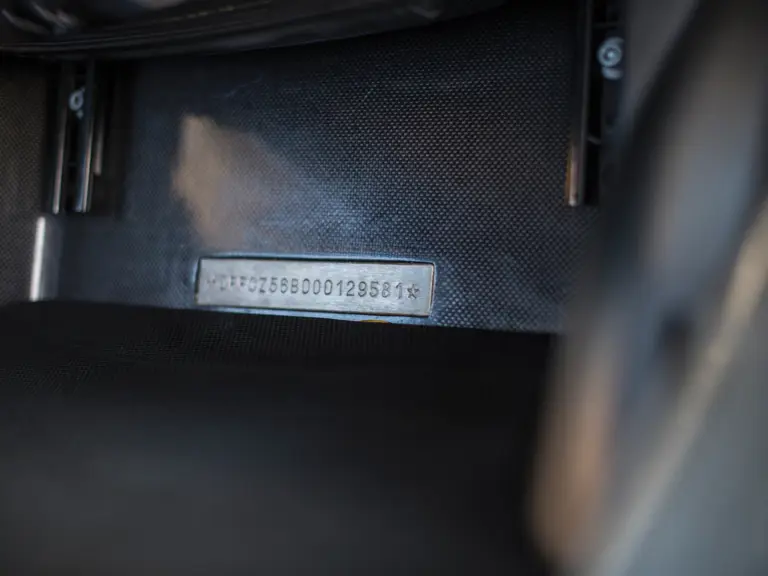
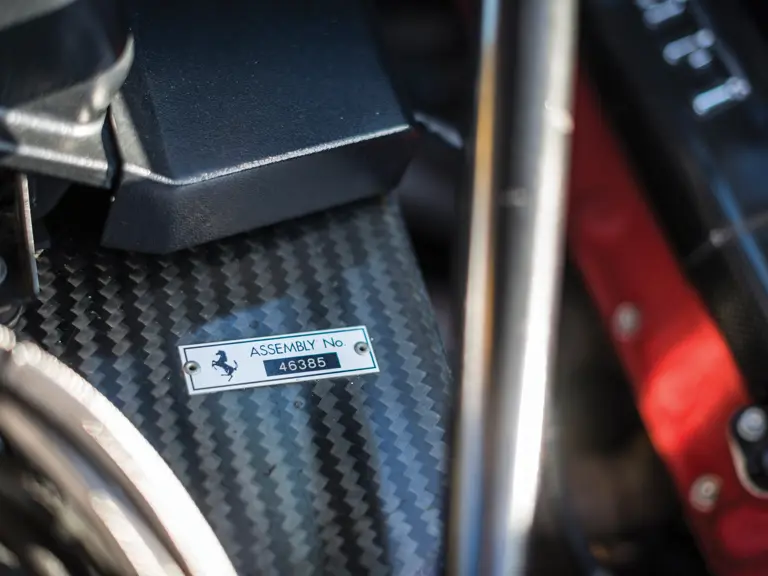
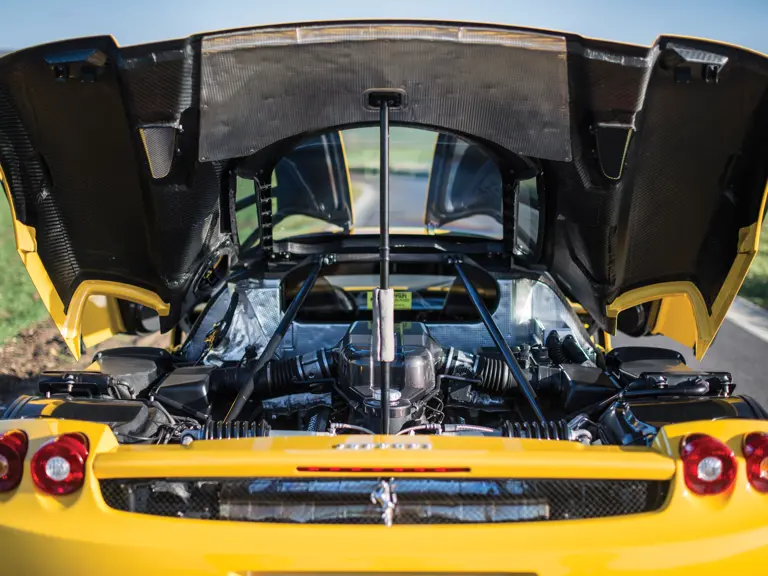
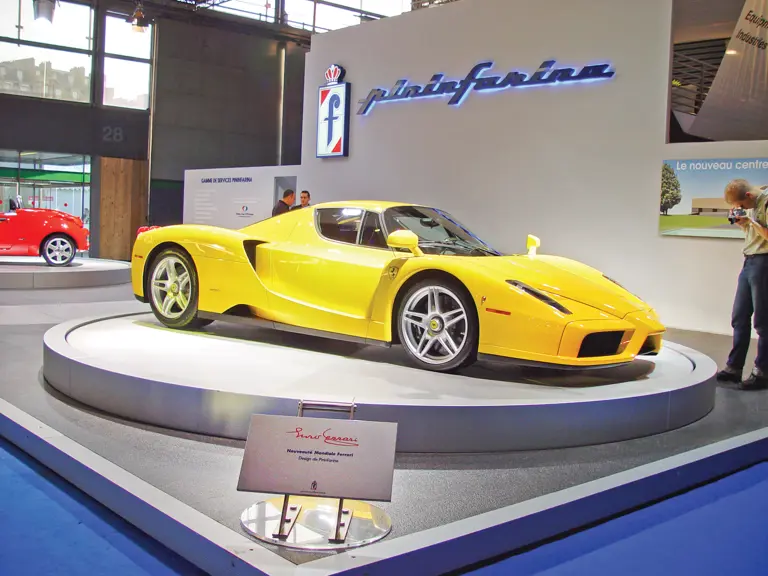
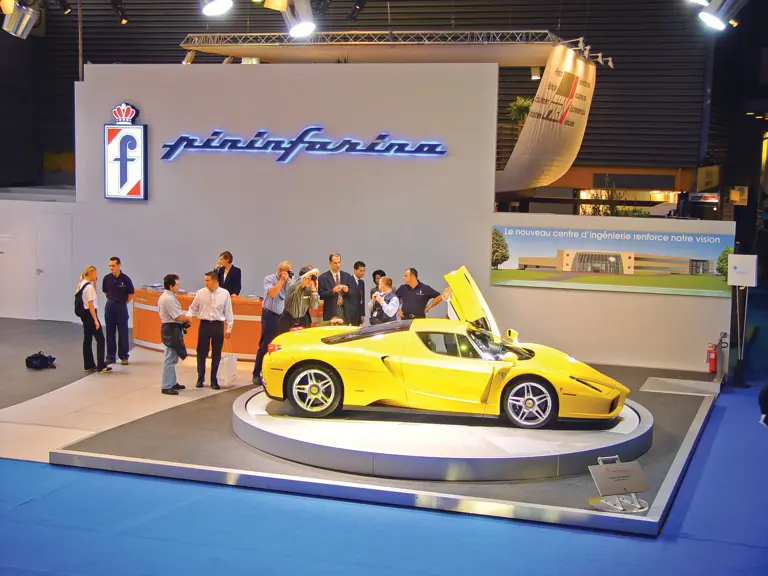
 | Cernobbio, Italy
| Cernobbio, Italy
